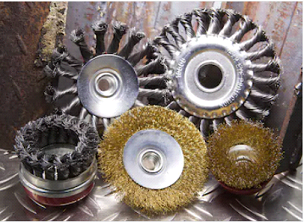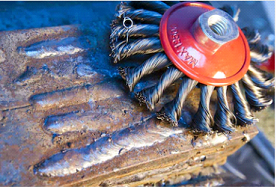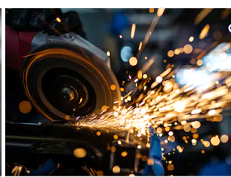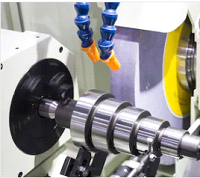Wheel Wire brush – Proper Positioning and Other Tips
March 25, 2020
Wheel wire brushes or mostly used for surface cleaning of metal and stainless steel welding applications.


In addition to paying attention to designations for RPM rating, size, and material, you should also follow these tips when using Wheel wire brush.
- Use the Orkon wheel wire brush or stringer wheel wire brush at a 90-degree angle, perpendicular to the work surface.
- Use the Orkon cup brush at horizontal position of the grinder so that the full face of the cup brush faces the work surface.
- User must apply the proper amount of pressure—to allow the wheel wire brush to do the work.
- Choose a grinder with the highest torque or amperage available for the application, as this will help the brush to do more of the work. For example, instead of using a 4.5-in. wheel on a 6-amp grinder, use a 4.5-in. wheel on a 10-amp grinder. The RPM rating remains the same, but the tool will provide more torque to cut into the metal.
- Choose a tool and consumables that offer quick, consistent cutting, which typically provides the most efficient performance.
- Store the wheel in a clean, dry environment, and avoid placing it in water or mud. This helps minimize environmental effects that could degrade its performance or cause it to crack or wear prematurely. The performance of wheel wire brush or cup brush tends to deteriorate when the wheel is stored under conditions where there is moisture.
- Inspect the wheel brush and consumable before each use to check for signs of damage or wear. Brushes can become harder to control as they wear down. If you can no longer make a safe cleaning because the wheel’s wires is worn out or thin, then the best course of action is to replace it.




